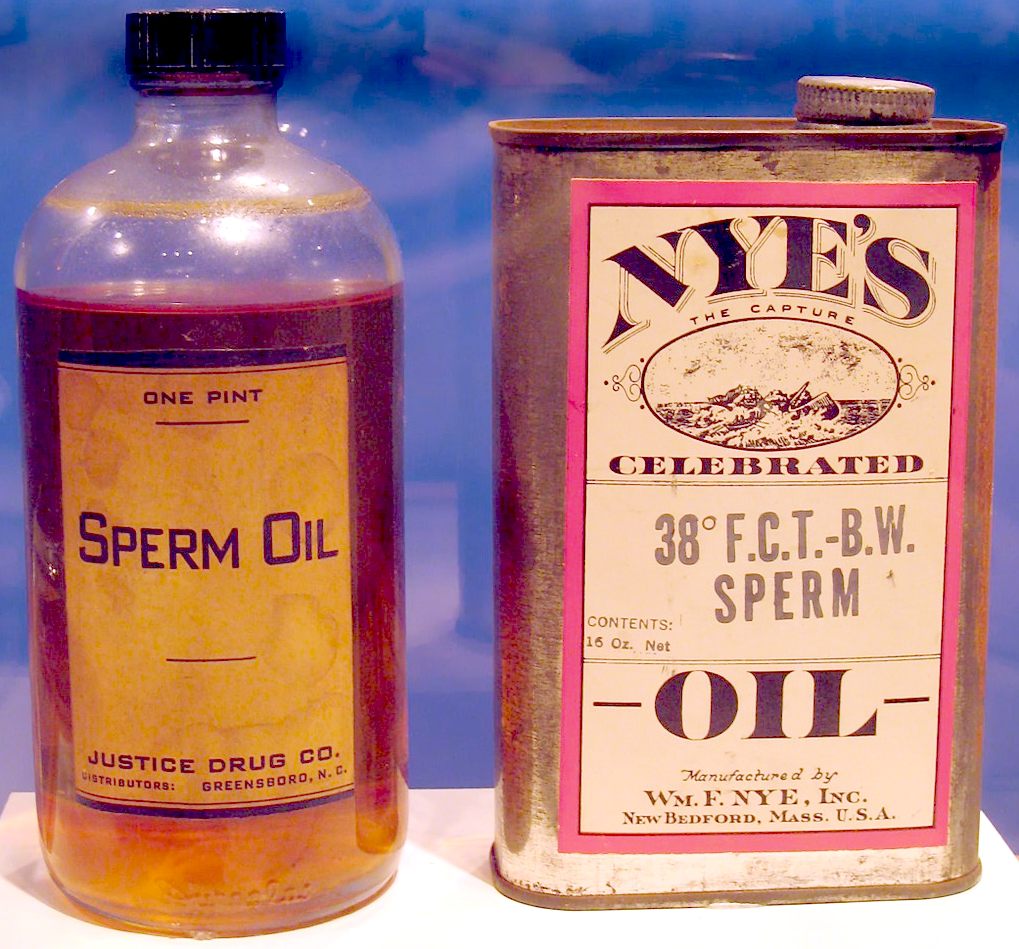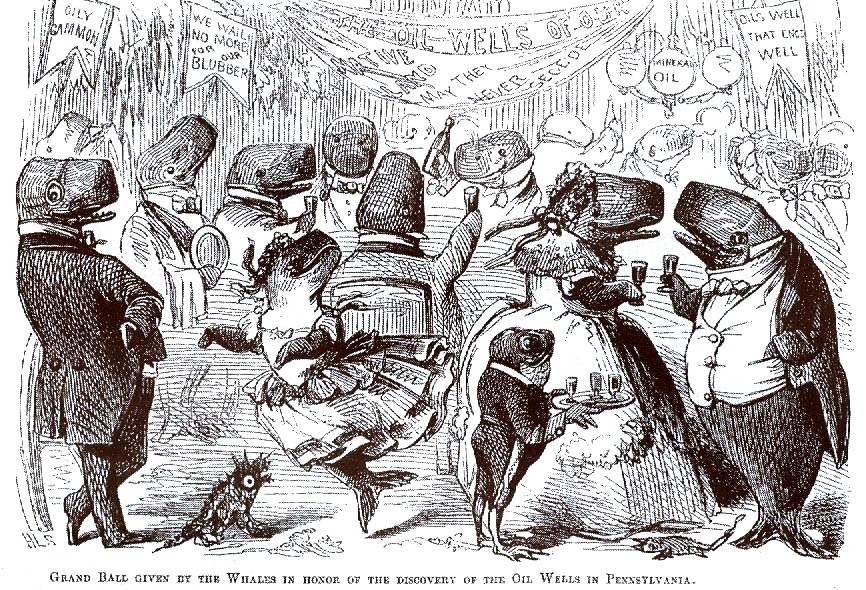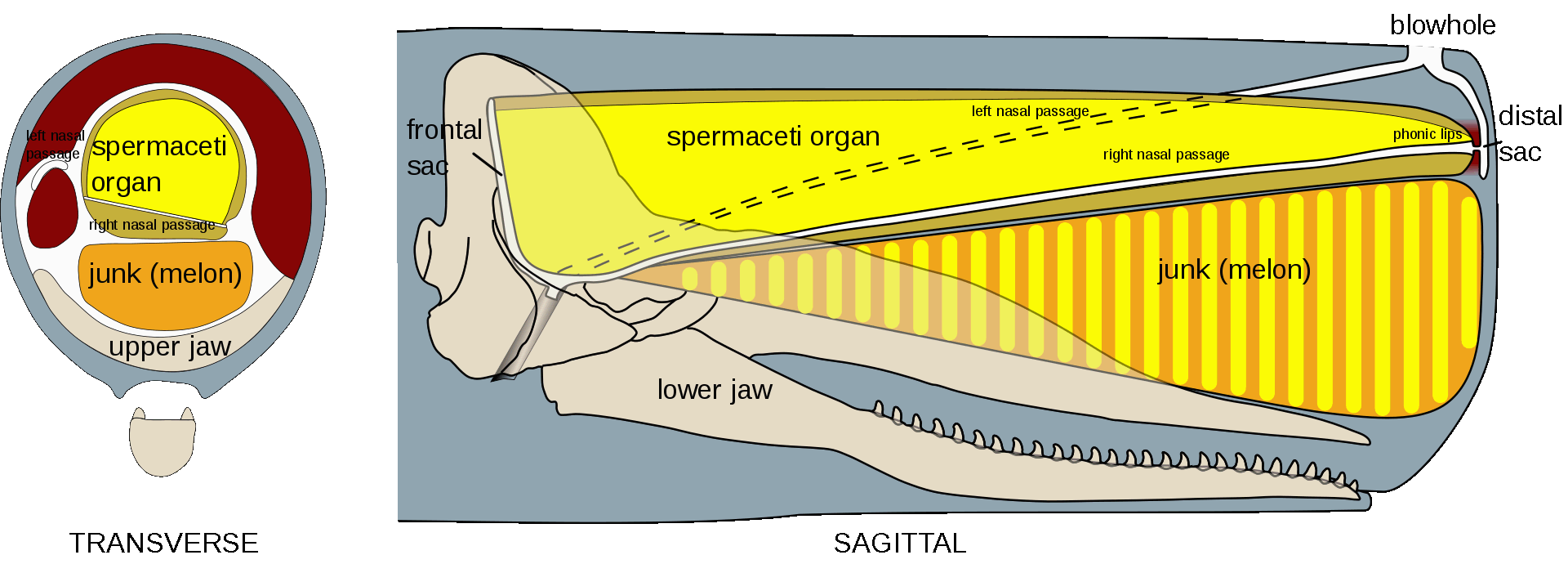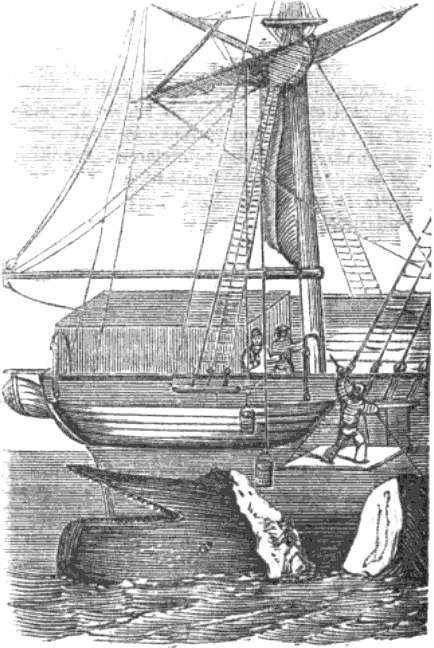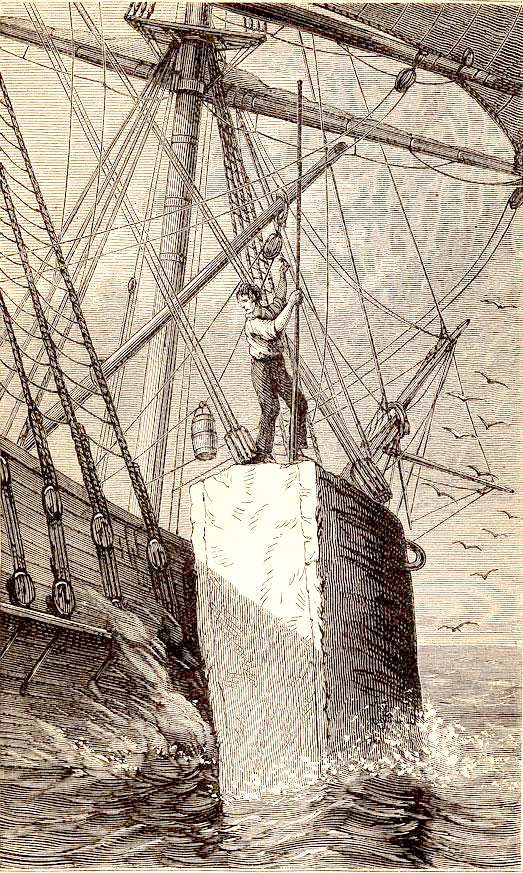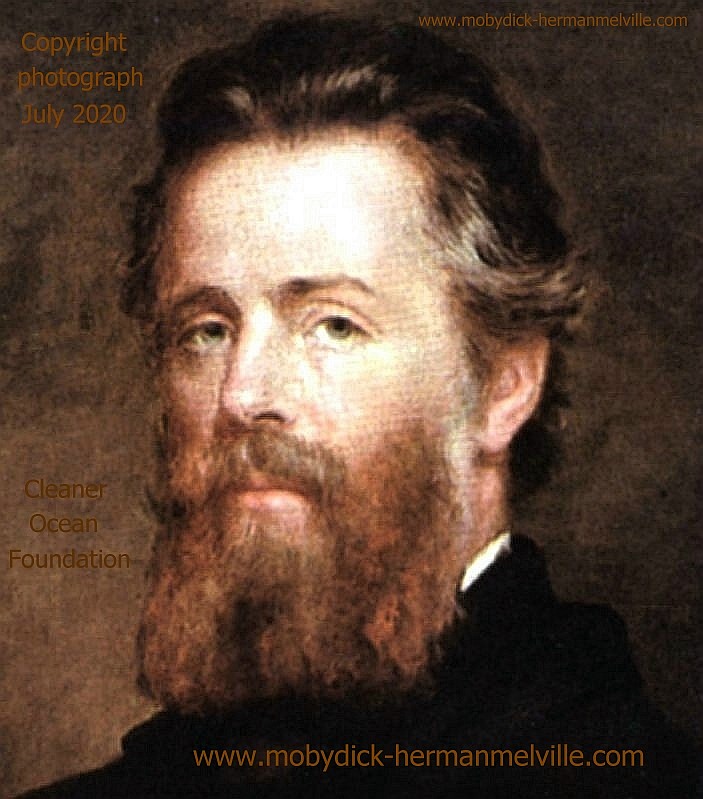|
SPERM OIL
Please use our A-Z INDEX to navigate this site
|
During the whaling era harvesters and manufacturers found
sperm oil to be a
valuable chemical for oil lamps and lubricants.
After killing a sperm whale, the whalers would pull the carcass alongside the main whaleship with the capture boat, or the whaleship would sail to the floating carcass if the weather conditions were favorable. The whale was then fastened to the starboard (right) side of the ship with heavy chains, whereby the crew then proceeded to erect a “cutting stage”, which primarily consisted of a wooden plank platform above the carcass.
Blubber was stripped from the entire length of the whale (with other parts of the carcass often harvested for fashion products such as in the case of the Baleen whale), but the primary source of sperm oil was the spermaceti organ and the junk (or "melon"), the organs that serve to focus and modulate the animal's vocalizations. A sperm whale's spermaceti organ may contain as much as 1,900 litres of substance. The matter from these organs was stored in casks to be processed on land; sometimes it was boiled first to prevent it going rancid. The blubber also contained smaller proportions of spermaceti, which was obtained by boiling the blubber on the ship itself.
On land, the casks of head-matter were allowed to chill during the winter, causing it to congeal into a spongy and viscous mass. The congealed matter was then loaded into wool sacks and placed in a press to squeeze out its liquid. This liquid was bottled and sold as "winter-strained sperm oil". This was the most valuable product: an oil that remained liquid in freezing winter temperatures. When spring came and the leftover solid matter melted a bit, the liquid was strained off and sold as "spring-strained sperm oil". In summer, the matter melted some more and the liquid was strained off to leave a fully solid wax. This wax, brown in color, was then bleached and sold as "spermaceti wax".
Sperm oil is a waxy liquid. It is a clear, yellowish liquid with a very faint odor. Sperm oil has a different composition from common whale oil, obtained from rendered blubber. Although it is traditionally called an "oil", it is technically a liquid wax. It is composed of wax esters with a small proportion of triglycerides, an ester of an unsaturated fatty acid and a branched-chain fatty alcohol. It is a natural antioxidant and heat-transfer agent. In the late-18th and early-19th centuries, sperm oil was prized as an illuminant for its bright, odorless flame and as a lubricant for its low viscosity and stability. It was supplanted in the late 19th century by less expensive alternatives such as kerosene and petroleum-based lubricants. With the 1987 international ban on whaling, sperm oil is no longer legally sold.
A sperm whale carcass would be roped and chained to a ship, and a platform lowered to enable the sailors to chop up the catch as quickly as possible. It was hard work and dangerous with sharks competing for bites of the dead animal.
The head of the sperm whale would be cut off and hoisted onboard ship, where a hole would be cut to bucket out the oils.
Gregory Peck gives an outstanding performance as Captain Ahab, the obsessed master of the Pequod, in the 1956 movie: Moby Dick.
A BIT OF MOBY HISTORY
Moby Dick is the story of a great white sperm whale that fought back at whalers who tried to harpoon him. The idea came to Herman Melville after he spent time on a commercial whaler, where stories abounded of the sinking of the Essex in 1821 and Mocha Dick, a giant sperm whale that sank around 20 ships, before being harpooned in 1838.
Moby Dick has inspired a great many adaptations, the same basic story finding its way into the making of four films and two television adaptations.
In addition there are many comics and illustrated volumes, adapted from the original, one of which is the emerging graphic novel version of a large humpback whale called Kulo Luna.
Kulo Luna is not as big as the whales depicted in Herman Melville's Moby Dick, but she has a diamond encrusted heart of gold, only attacking whaling ships that present a danger to herself or her friends. She becomes a $Billion Dollar Whale.
Herman Melville was the author of what we'd now consider an illegal activity, the commercial hunting of whales for oil and meat.
Please use our A-Z INDEX to navigate this site
|
|
This website is Copyright © 2020 Cleaner Ocean Foundation Ltd and Jameson Hunter Ltd
|
